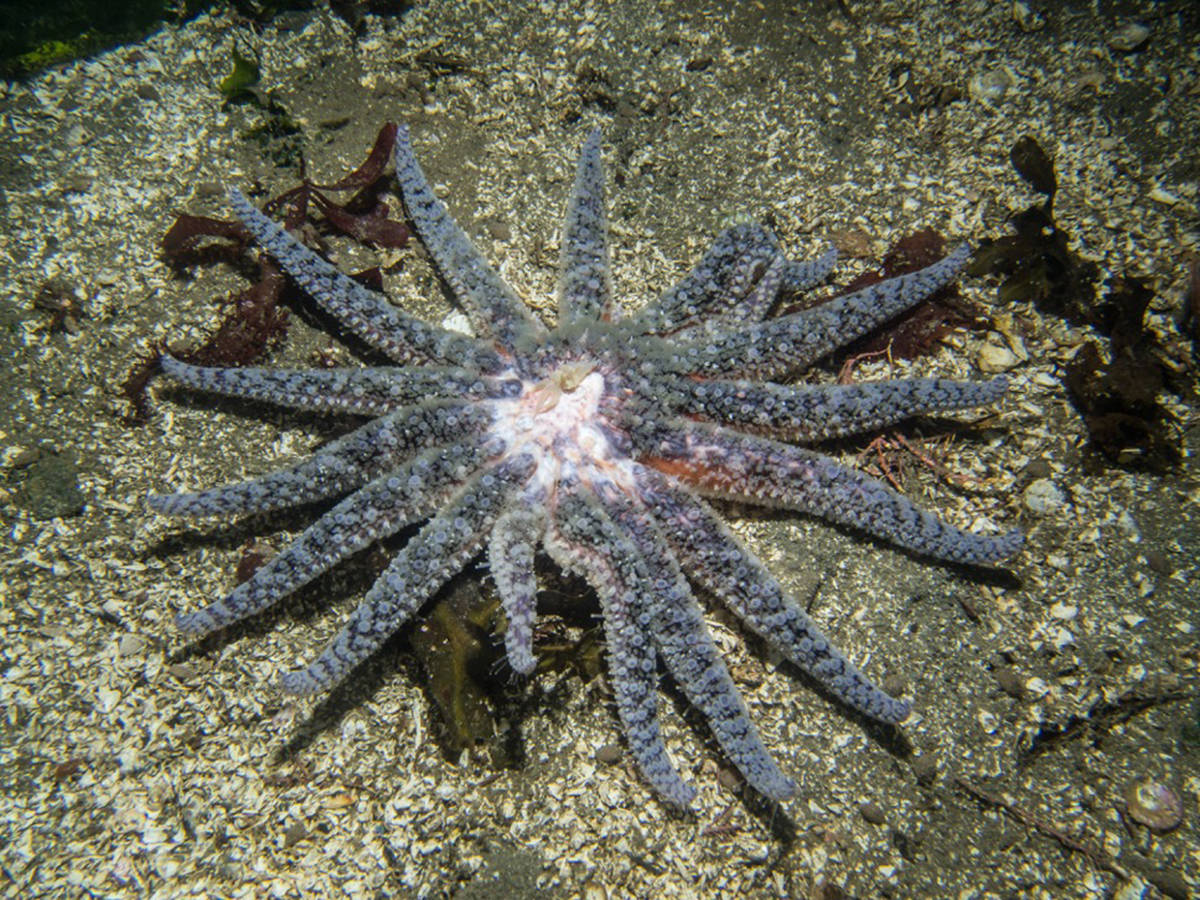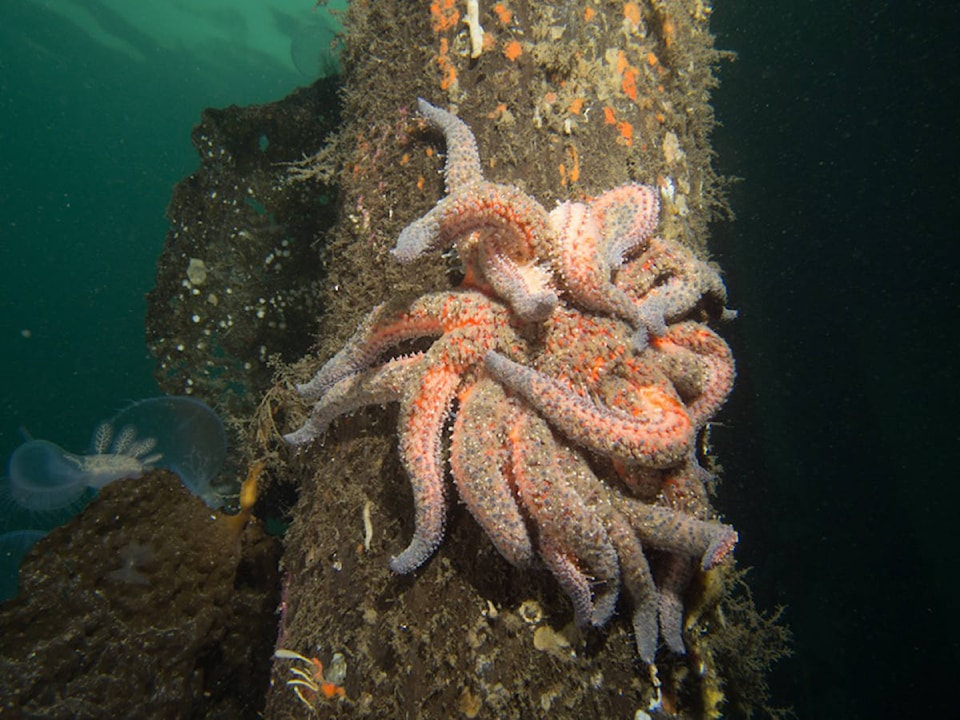Sunflower sea stars are continuing to disappear from North East Vancouver Island waters because of a virus known as “Sea Star Wasting Syndrome”.
Jackie Hildering, citizen scientist and underwater photographer known as the Marine Detective, has been monitoring the syndrome in Northern Vancouver Island waters since 2013.
“I feel very secure in saying the sunflower star is the most impacted up here,” said Hildering, who also noted the disease varies in severity depending on sea star species.
The sunflower sea star is among the largest in the world with a maximum span of one metre.
The syndrome affects about 20 species ranging from Mexico to Alaska, with some sea star species having rebounded in certain areas.
Hildering has been monitoring the progression of the disease in sunflower sea stars, particularly in the Bear Cove area of Port Hardy.
“All of our coastal folk would expect to see the adults there and they just are not there,” she said, adding “for the adult sunflower stars, they have virtually vanished.”
Hildering has done over 50 dives in the last year and has only seen four adult sunflower sea stars. “Any coastal British Columbian would be shocked by that,” she added.
She said she has seen “waves” of sunflower sea star babies and juveniles but has not seen them survive into adulthood.
Symptoms of sea star wasting syndrome include the sea star tissue contorting and wasting away.
“It’s an incredibly morbid thing I’ve had to document as a biologist,” said Hildering. “A stress response for a sea star is that they shed their legs, so you see legs crawling away from a sea star.”
She noted the virus has been found in sea stars for 72 years, but there has never been an outbreak to this extent.
Research is now focused on the diseases’ correlation with increasing ocean temperatures, which has been thought to be a factor in its cause.
“People will want a definitive answer to what’s happening, but this is as complex as whats happening to the southern resident orca, it’s an interplay of many variables,” she said.
Sea stars have a similar ecological niche and role in the environment as sea otters do - eating sea urchins, which helps to ensure healthy kelp forests.
However, Hildering said awareness is low because people can’t see the extent of what’s happening.
“It’s difficult to see an absence in something, and because it’s not in the public attention, the research dollars and resources aren’t there,” she stated, adding “we feel a disconnect from the things we can’t see as easily.”
Hildering said sea star wasting disease is an important indicator of larger environmental issues.
She said we should look to this as “a further motivator to reduce our use of harmful chemicals, fossil fuels, and disposables, because the ocean and its species are likely to testify to the environmental problems that will impact us first.”

